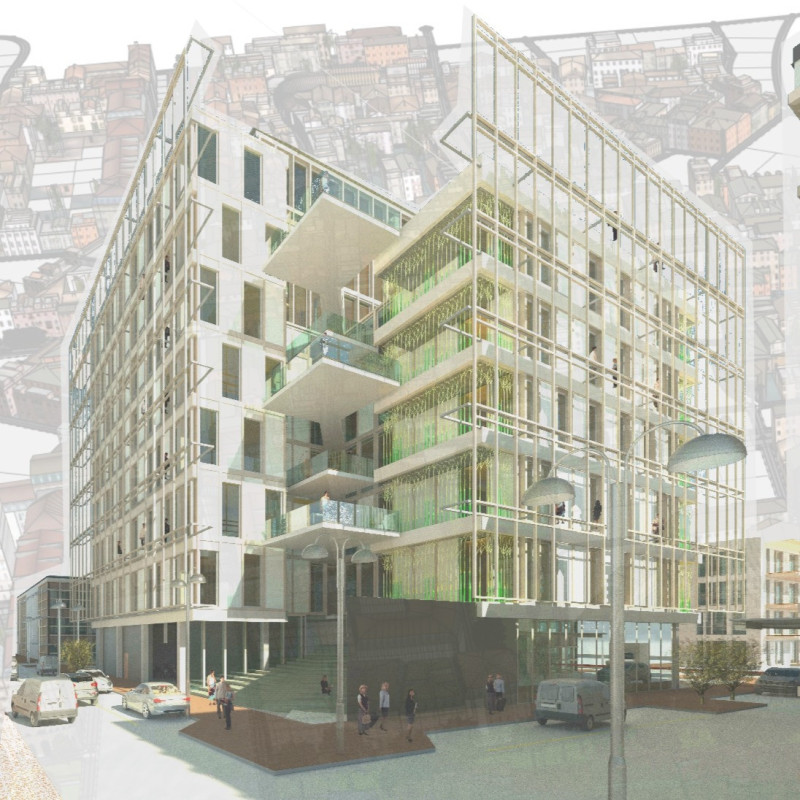5 key facts about this project
The design project situated in Rome presents a new approach to co-living that fits within the city’s dense and rich urban environment. It occupies a 0.5-hectare block and focuses on integrating both residential units and communal spaces. The aim is to create a living space that fosters community while addressing the need for diverse housing solutions. The design respects the historical context of Rome, offering a modern touch that coexists with the architectural character of the city.
Central Circulation Core
A key feature of the design is a central vertical circulation area that includes stairs, a lift, and a shallow ramp. This core serves as the main pathway for residents, encouraging movement throughout the building. It also acts as a gathering point, promoting social interactions among neighbors. The choice to place this core in a prominent location reflects a commitment to enhancing community living.
Private and Communal Areas
The floor plan carefully balances private and communal spaces. Private units are organized to serve essential functions like sleeping and bathing, while shared areas are designated for cooking and dining. This layout encourages residents to come together, creating opportunities for interaction and support. Communal spaces are flexible, designed for various activities and gatherings, which strengthens the social fabric of the living environment.
Sustainability Features
Sustainability plays an important role in the design. Photovoltaic panels are installed to generate electricity and double as louvres for light control and privacy. The building utilizes stack and cross ventilation to improve air quality and comfort. A rainwater collection system is included to help manage water resources, along with a centralized waste management system that connects to existing municipal services.
The façade incorporates balconies with diverse orientations, allowing residents to connect with the outdoors. These spaces not only enhance the overall design but also provide areas for socialization and relaxation. The intention is to create a living environment that promotes community while respecting the unique character of Rome.






















































